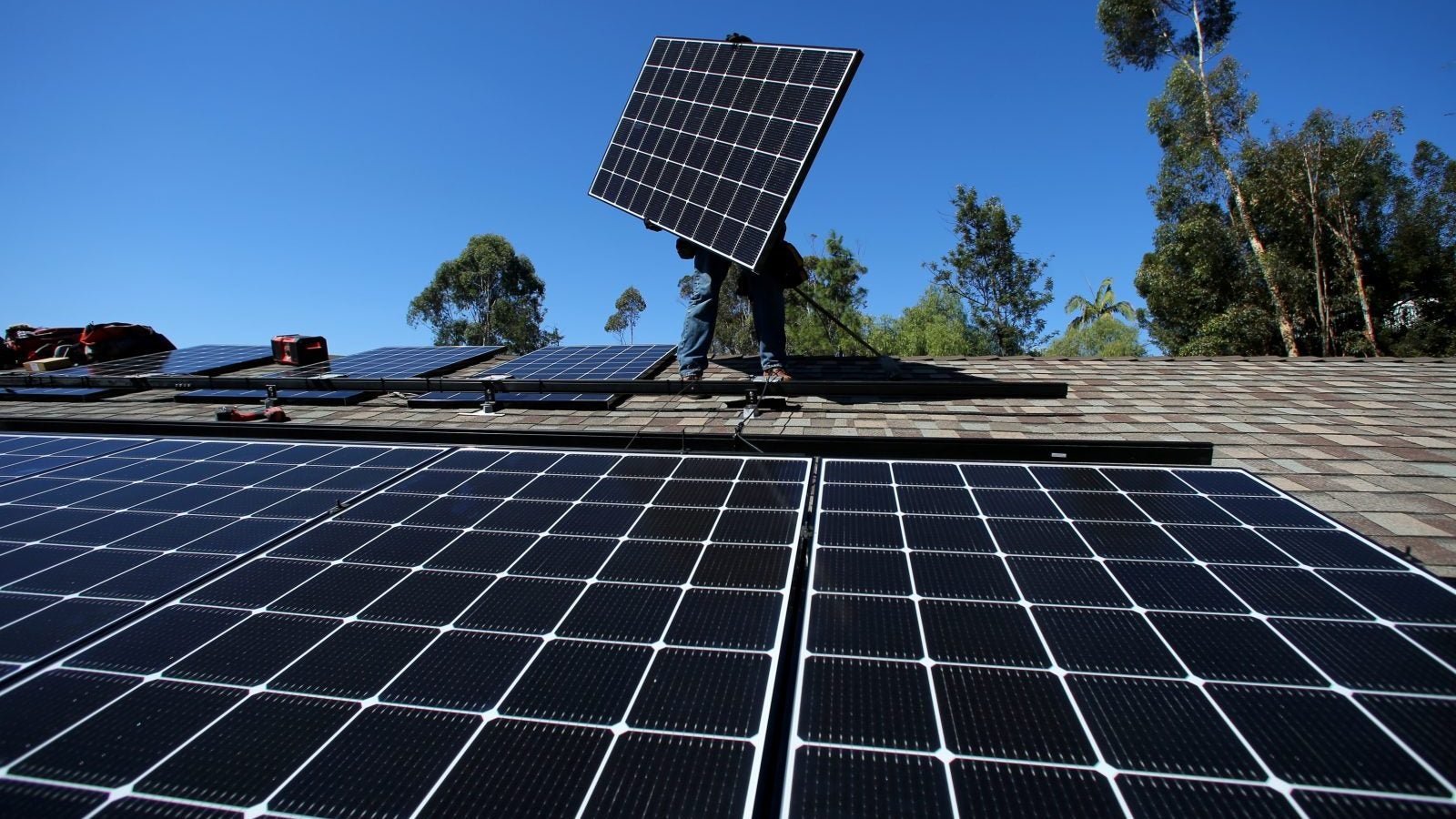India has quietly downscaled its rooftop solar power target
Rooftop solar may have been the fastest-growing segment within India’s renewable energy sector last year, but it is still not growing fast enough.


Rooftop solar may have been the fastest-growing segment within India’s renewable energy sector last year, but it is still not growing fast enough.
The Narendra Modi government has quietly downscaled its targets for financial year 2017-18 to only 1,000 megawatts (MW) of capacity. While the target was 5,000 MW till as recently as Dec. 21, 2017, the capacity progress report made available in January shows the scaled-down figure.
The original target (pdf) was 200 MW by financial year 2016, followed by 4,800 MW the next year, and 5,000 MW for financial year 2018. However, India’s cumulative installed capacity of rooftop solar stood at 982 MW as of December 2017. A mere 271 MW has come up this year, data from the ministry of new and renewable energy (MNRE) show. “It looks difficult for them to achieve the target of 1,000 (MW),” Amit Kumar, a partner at consulting firm PwC, who focuses on renewables, told Quartz.
The MNRE also seems to have acknowledged as much. “But as we speak today, against this target we have set up around 16 GW of ground-mounted and 1 GW of rooftop solar. So if I can admit… our rooftop programme is not doing really well,” MNRE secretary Anand Kumar said on Jan. 19 at a workshop organised by trade body Confederation of Indian Industry in New Delhi, the Press Trust of India reported. The MNRE did not respond to an emailed questionnaire from Quartz.
Yet, the rooftop solar segment had really hit its stride in the last financial year when it became cheaper than grid power for most commercial and industrial users, driving up installations. Driven largely by government incentives and subsidies, around 715 MW of capacity was added across the country last fiscal, according to a November 2017 report (pdf) by Bloomberg New Energy Finance (BNEF).
What’s the problem?
“The reason for the reduction is (that) the policy currently is purely for industrial rooftop projects. They don’t have too many benefits for a residential rooftop,” Anil Jain, managing director of Refex Energy, which sets up solar power plants, told Quartz. “MNRE is still working on residential rooftop to see how to make it attractive.”
The biggest problem the sector faces is that state electricity utilities and distribution companies (discoms) across India aren’t supportive as it could hurt their finances. As more commercial and industrial users, who bring the maximum revenues to state discoms, take to solar power, the revenues of electricity generators and distributors would fall. As of 2015, Indian discoms were suffering losses of around $67 billion, BNEF said in the report.
Further, India hasn’t come out with uniform policies around net metering that allows users to sell surplus power to electricity utilities. Net metering policies are required to enable widespread adoption of rooftop solar power, so that users can maximise benefits.
While commercial and industrial rooftop projects are already economical without net metering, for residential rooftop solar to take off, such a policy is critical since homeowners don’t use much power during the day, according to BNEF. Even those states that allow net metering have a cap on the amount of power that can be fed back into the state grid.
Since discoms were posing the biggest hurdle, the MNRE has proposed a few initiatives to woo them. For one, the government plans to compensate them by providing performance-linked incentives for each MW of capacity added in their distribution network, the MNRE said in a note in December 2017.
“There’ll be a difference in the next one or two years compared to 2016 and 2017,” Kumar of PwC said, adding that several banks, including the State Bank of India and Punjab National Bank, have committed to providing financing support to rooftop solar projects.